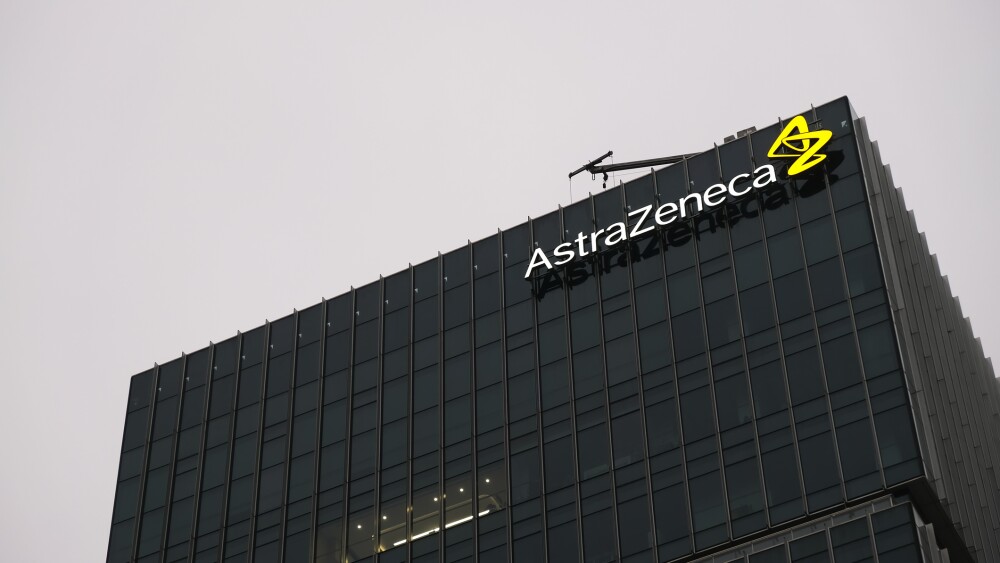Enveda Biosciences believes the answers to humanity’s most challenging diseases can be found by harnessing the complexity of the natural world.
Enveda CEO Viswa Colluru, Ph.D./Courtesy Enveda Biosciences
Two-year-old biotech company Enveda Biosciences believes the answers to humanity’s most challenging diseases can be found by harnessing the complexity of the natural world. Enveda’s home base in Boulder, Colorado – where many ponder the wonders of the Rocky Mountains every day – could not be more fitting.
For centuries, human societies have been using plant-based and other natural products to treat illness, but as Enveda Founder and CEO Viswa Colluru, Ph.D. told BioSpace, “we are in a different place” today than we were in the late 1990s when interest in biochemistry and natural products first peaked. Indeed, in 2019, when Colluru founded Enveda, machine learning and computational metabolomics had finally arrived, and he wanted to leverage both to their full potential to uncover the fundamental biology of disease and speed up the drug discovery process.
“We started Enveda with the vision to build the first high-resolution chemical map of planet Earth and change where we look for new medicines,” Colluru said. “Because if you ask me, the most powerful library on Earth is one that has spent about 4 billion years in evolution.”
Enveda plans to maximize this library by specifically modulating previously inaccessible biology, such as undruggable proteins, RNA, or even microbes for therapeutic use. The company’s platform is made up of two parts; the first, a Google-like chemical search engine with an algorithm that can directly predict structure from mass spectrometry. This search engine takes the chemistry in the world – of which 95% remains unknown – and allows Enveda to draw insights from those compounds at scale without needing to isolate each one. It can then determine the specific activity and therapeutic potential of each compound drawing on high-throughput biological experiments conducted in Enveda’s labs.
The second piece is the knowledge graph, which Colluru called the “largest digitized knowledge base of humanity’s use of plants as medicine integrated into all of modern biochemistry.” Through this technology, Enveda is identifying how new regions of chemical space could drive drug discovery for specific diseases. “It takes about 16 million relationships of all known proteins, cellular processes and disease symptoms, and maps it to our data,” he explained. One compound, for example, might have an anti-inflammatory effect in the brain and could be useful for treating Parkinson’s disease.
During just Enveda’s first screening campaign for the target, the team uncovered a potential source of a small molecule to modulate Proprotein convertase subtilisin/kexin type 9 (PCSK9), which Colluru described as a “holy grail cardiometabolic target.” Inflammasome pathway modulators were another big discovery. “By studying the protein targets they bind, we’ve rediscovered known but undrugged inflammasome pathway targets and many potential new ones,” he shared.
So, why this specific approach to drug discovery? The answer, Colluru said, is found in historical success rates. “Natural products or their derivatives account for one-third of all approved small molecule medicines.” This, despite science having only discovered about 150,000 natural products to date. Colluru contrasted that with synthetic libraries, through which large pharmaceutical companies screen roughly 5 to 8 million compounds, accounting for the other two-thirds. “If you do the math, historically, natural products have been 10 times more successful at yielding an approved medicine.”
Colluru gave his theory as to why this is.
“Many of the sources of natural compounds, plants, for example, have co-evolved with complex life. Plants can’t stand up and walk away from an environment they don’t like, so instead, they produce a lot of compounds that allow them to modulate their environment. This environment consisted of microbes, insects, and even mammals. Today, we know that we have as much if not more microbial DNA in our own body and our proteins share homology with those of other mammals.” This makes nature a much more relevant chemical dataset, he said, emphasizing that only about 5% of the chemistry on Earth is known. “So, imagine what the other 95% would do for drug discovery and beyond.”
To accomplish this ambitious mission, Colluru has brought on an executive team with serious gravitas. There’s Sotirios Karathanasis, Ph.D., chief science officer, who comes to Enveda following stints as CSO at Eli Lilly and vice president and head of biosciences at AstraZeneca, and Bryan Norman, Ph.D., VP of drug discovery, who spent 25 years leading drug discovery efforts at Lilly and Searle.
For Karathanasis, the time to maximize natural products in therapeutics is here.
“While it is common knowledge that natural products have historically been a productive source of new drugs, the consistency of active compound discovery from natural products has been challenging. Advanced technologies, including large-scale untargeted metabolomics and modern machine learning algorithms, are overcoming this challenge to provide novel, evolution-optimized pharmacophores for the treatment of multiple diseases,” he said. “Characterization of these compounds also provides unique opportunities for discovery of fundamental biology analogous to the discovery of the mTOR pathway using Rapamycin and last year’s Nobel-winning discovery of pain mechanisms using Capsaicin. If Enveda’s platform had existed when I was leading large teams in big pharma, we may never have moved away from natural products.”
Then, there is Colluru himself who brings his formative experience from Recursion Pharmaceuticals, a “unicorn” known for integrating technological innovations across biology, chemistry, automation, data science and engineering. Recently, Enveda tapped August Allen, whom Colluru knew from his Recursion days, as chief platform officer. This is a relatively new role in biotech, but one Colluru said is the right fit for Enveda.
“Our fundamental strength as a company is our differentiated technology platform,” he said. “The goal of the chief platform officer is to operationalize and scale the execution of our platform and generate data which in turn feeds its evolution. August joins us after several very impactful years at Recursion, scaling their platform from its very earliest stages.”
The foundation for much of Enveda’s science is based upon the work of Pieter Dorrestein, Ph.D., a leading computational metabolomics researcher and Enveda’s scientific co-founder. Dorrestein, a professor at the University of California San Diego (UCSD), built the first cloud-scale repositories for mass spec data, along with an algorithm that was able to analyze the entire repository, regardless of whether the identity of the chemical was known.
Enveda’s therapeutic scope is driven “by the lack of success in complex diseases from traditional ways of thinking about single targets or modalities,” Colluru said. The company is prioritizing therapeutic targets in the cardiovascular, metabolic and neurological spaces where Enveda has an entry point to a rare disease or those that have shared mechanisms with a rare indication. Two examples of this are Parkinson’s and Amyotrophic Lateral Sclerosis (ALS), both of which Enveda is in the early stages of exploring.
In order to offer the maximum benefit for patients, Enveda is exploring partnerships with companies that bring complementary expertise in disease areas outside of its immediate scope. This could include indications such as respiratory disease or large diseases in the cardiometabolic space, Colluru said.
“We recognize that the biggest outcome for patients is likely from being able to use all of the excess productivity of our platform,” Colluru said. “Right now, it is producing more chemical substrate and exciting early data than we know what to do with.”
While Enveda’s short-term objective is to discover new natural small molecule therapeutics, Colluru sees broader long-term potential for the platform.
One application could be using the algorithm to predict unknown metabolites in blood. “That will herald a new era of precision medicine, based not on genomics, but on metabolomics,” he said. Another potential use is in agriculture, as nature’s metabolites could inform the functions of nature, enabling an understanding of “the basis of food, nutrition, taste and pest resistance.” This could become particularly relevant as climate change continues to impact the world.
Another potential breakthrough is the identification of chemical fingerprints, which could have applications in forensics. “Just like we all have our DNA fingerprints, we all have our chemical fingerprints, and this is very different from our physical fingerprint or genetic fingerprint.” Dorrestein published a paper showing that it was possible to track the cosmetics used on the human body for several days.
Since founding Enveda with $70 thousand of his own savings, Colluru and his team have been on what many would call a remarkable pace. In June 2021, the company raised $51M in a Series A funding round led by Lux Capital. Enveda also found its way into BioSpace’s NextGen Bio Class of 2022, a list of the most promising recently-launched life sciences companies in North America.
Colluru credits this rapid progress to two factors: one, hiring amazing people, and then, “creating the culture and the habit of getting out of their way,” and two; learning to get comfortable with uncertainty. “I think it is very, very unlikely that you’ll ever be able to see the full staircase, but that should never stop you from taking the first two steps. At Enveda, we have the attitude and culture that we’re okay venturing into the unknown, and as a result, it’s driven a lot of our discoveries and success.”






